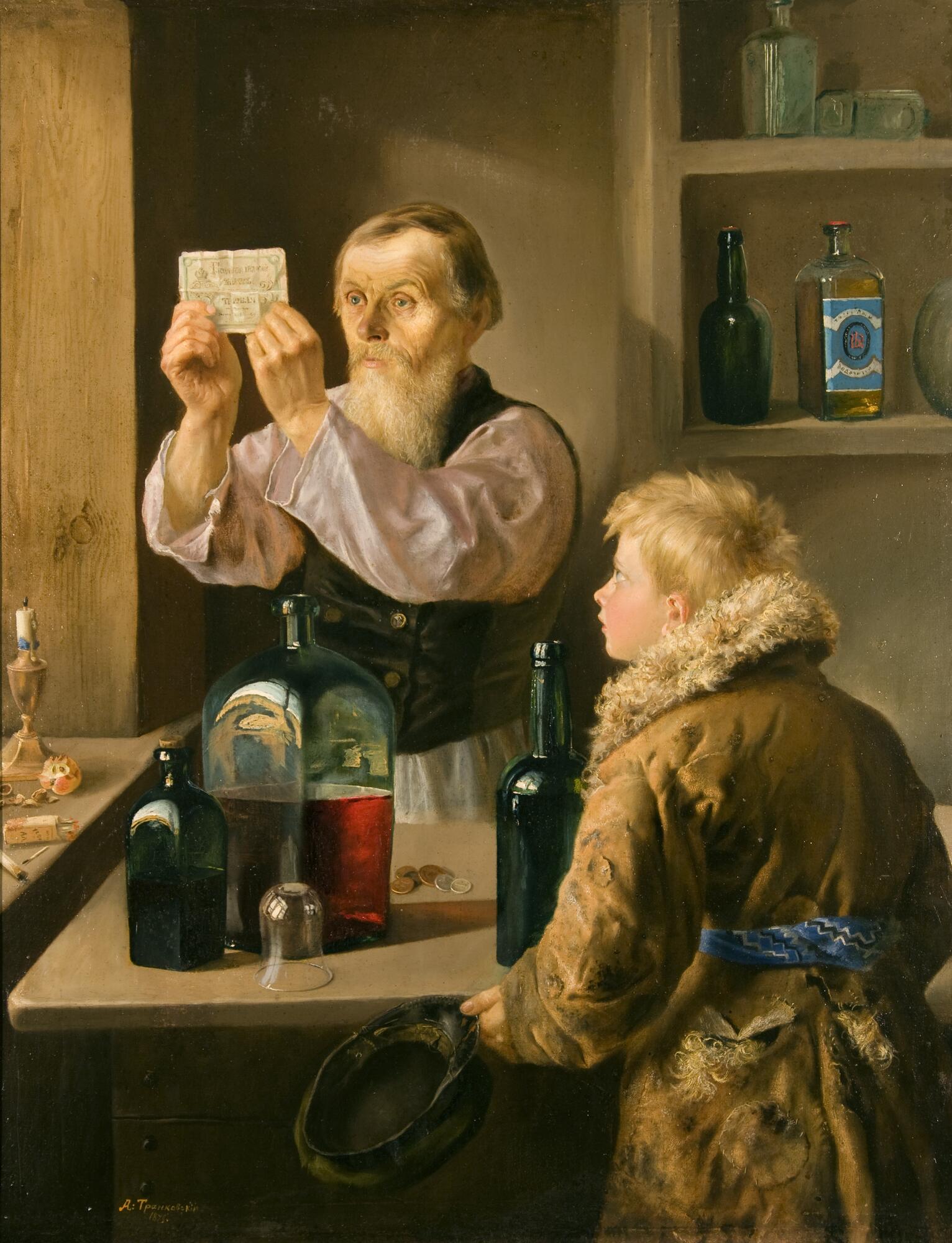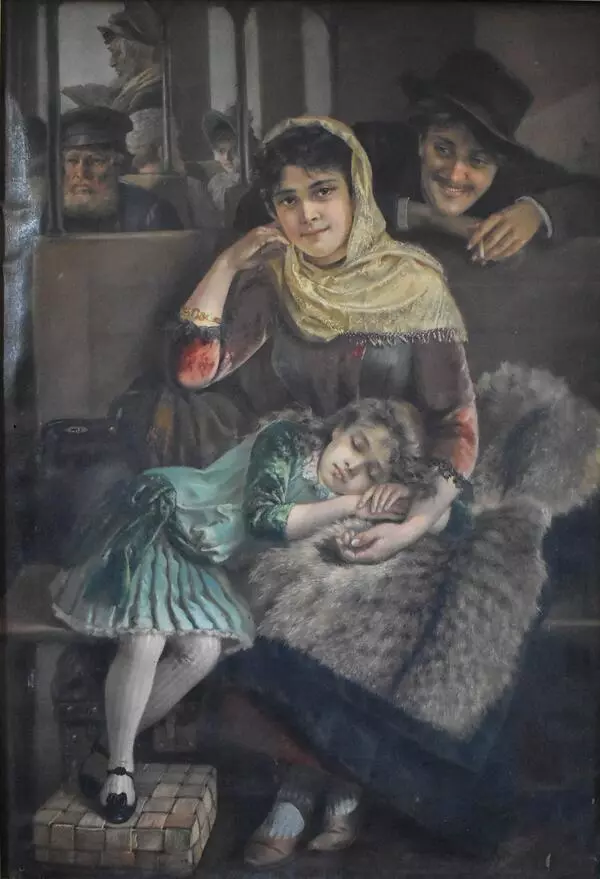The Russian artist and painter Alexey Ivanovich Trankovsky was born into a noble family in the Sychevsky district of the Smolensk province. Information on Trankovsky’s graduation from any art educational institution could not be found. It is highly likely that he was an amateur artist. In 1882, Alexey Trankovsky sent three paintings — “A Wedding in the House of a Russian Boyar, ” “Torture for Heresy and Old Believers Sign of the Cross in the Old Days” and “From Folk Life, Depicting the Writing of a Petition in a Tavern by a Village Lawyer” — to the Academy of Arts in order to be recognized as an artist. The request apparently went unanswered. Most likely, the Academy did not respond to the painter for political reasons, because of the artist’s interest in Old Believers.
Alexey Ivanovich created mainly genre as well as historical paintings. Many of the artist’s works, which were kept in his family estate in the Smolensk province, were destroyed during the civil war. The rest of the paintings were taken to Paris in 1914 for an exhibition, where they remained in private collections. Trankovsky’s works were also reproduced on old postcards and as book illustrations. The main exhibition of the Voronezh Art Museum features a genre painting by the artist called “Village Kulak.”
The painting depicts an unpleasant scene: one of the parents sent a beggar boy to the shopkeeper for an alcoholic drink. The artist focuses on the torn clothes of the boy. The picture is distinguished by meticulous elaboration of details. The researchers note that it is difficult to find such elaborate textured nuances of characters’ clothes in paintings by artists without professional education.
The painting definitely belongs to genre art, popular in the 19th century. Back then, artists who showed the lives of the common class became a kind of spokesmen of popular opinion.
The work entered the collection of the Voronezh
Regional Art Museum named after Ivan Kramskoy in 1933 from the Voronezh Museum
of Local Lore. Previously, the painting belonged to a major Ural industrialist
Alexey Fedorovich Turchaninov, who purchased the artwork from Alexey Ivanovich
Trankovsky himself.



